After more than a year of moving through an initial Awareness level and into the Operational trial-and-error testing and experimentation level, we will soon see brands and businesses elevate their use of AI—particularly generative AI—to the Operational level, which is the first of three stages of AI maturity. New research from AI training data firm LXT reveals that organizations have already taken large steps, with nearly three-quarters (72 percent) reporting that they have reached higher levels of AI maturity. The most significant shift is in the mid-range, where nearly a third of companies state that AI is now in production and creating value, which defines the Operational stage..
The firm’s third annual executive survey, The Path to AI Maturity, in partnership with research firm Censuswide, reveals that all of that progression is not without substantial cost—to achieve this, half of all organizations are investing between $1 million and $50 million, and more than ten percent reported an AI budget between $50 million and $500 million.
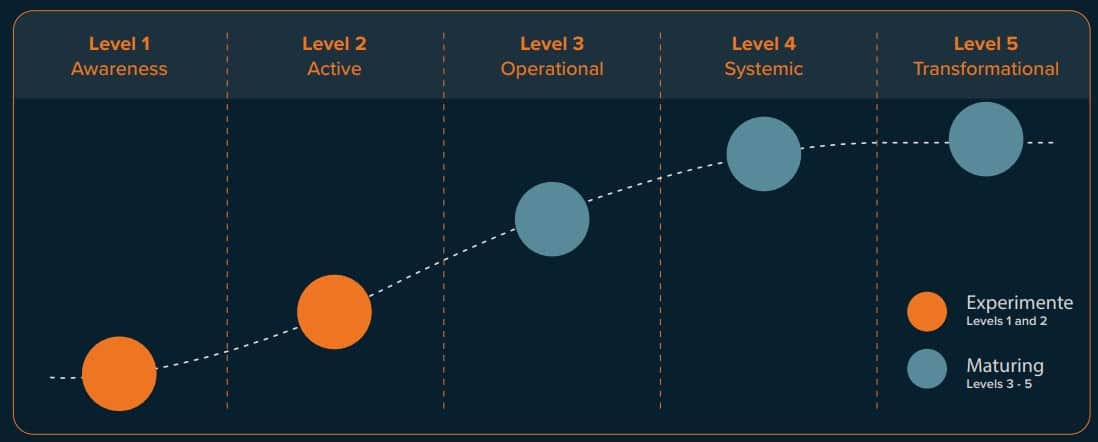
“2023 was the year of AI and became an imperative for companies of all sizes,” said Mohammad Omar, LXT founder and CEO, in a news release. “Now more than ever, organizations realize that AI is table stakes to remain competitive, and they are taking the necessary steps to grow in AI maturity. These include the prioritization of powerful technologies such as generative AI, and the use of high-quality training data.”
A boost in enterprise AI maturity—from experimentation to AI in production and creating value
In the survey, executives were asked to place their companies on the Gartner AI Maturity Model, and nearly three-quarters (72 percent) report that they have reached one of the higher levels of maturity (compared to 48 percent in the 2023 report and 40 percent in 2022). These stages range from Operational, where AI is in production and creating value, to Transformational, where AI is part of the business DNA.
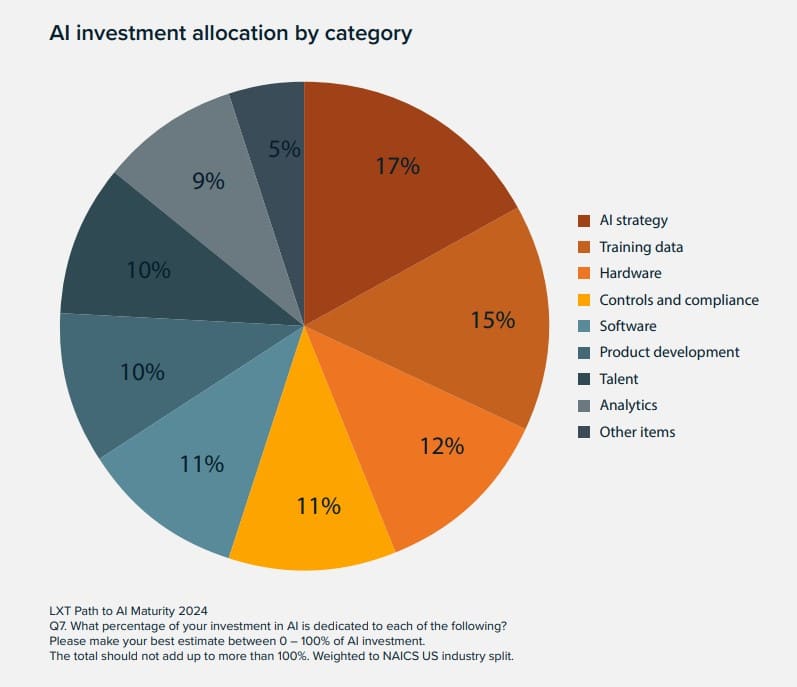
But the greatest shift in AI maturity across all three years is represented by the move from Active to Operational, with the largest jump in this year’s survey. Nearly one-third (32 percent) report that their organizations have reached the Operational stage, the first of three mature stages. This stage is now the most common AI maturity level, whereas up until now it was the Active stage, where companies undergo initial experimentation and pilot projects with AI.
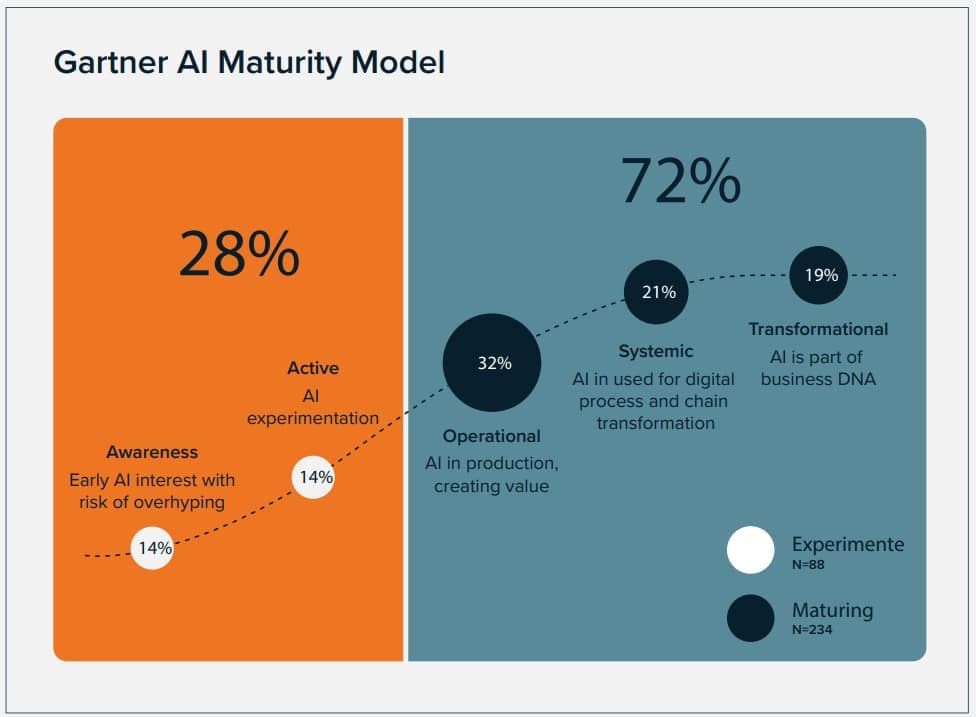
Generative AI—nearly seventy percent state it is more important than other AI initiatives
According to 69 percent of respondents, generative AI is more important to their organizations than other AI initiatives, and 11 percent say it is much more important. The three top uses for generative AI include creating documentation (38 percent), improving decision-making (36 percent) and marketing (35 percent). Only 1 percent of all organizations do not use generative AI solutions.
Organizations are sourcing the data to train their generative AI solutions by using internal data (36 percent), collecting data externally through a third party (35 percent), collecting data externally themselves (35 percent), and by using publicly available data sets (32 percent). The biggest bottlenecks include security and privacy concerns (39 percent), accuracy of the output (38 percent), and the availability of quality 4raining data (36 percent).
Key business drivers of AI strategies:
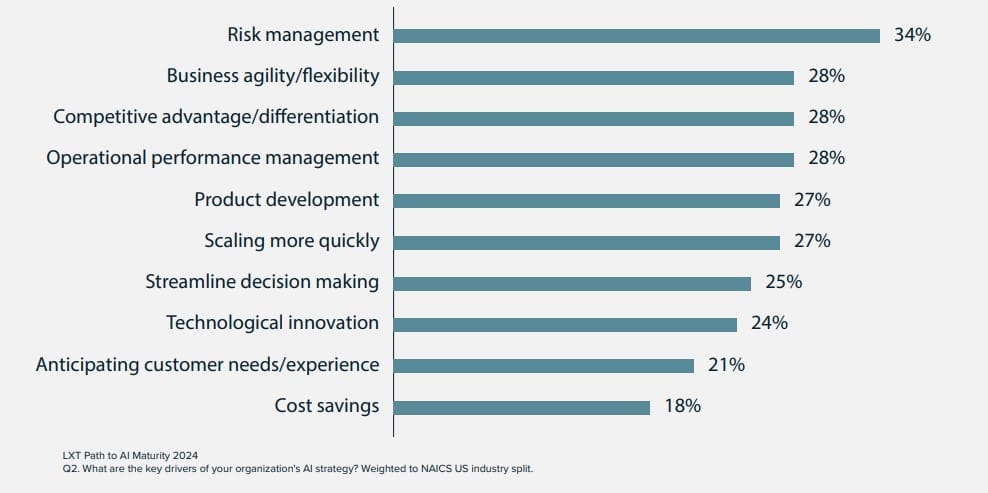
Despite the value placed on generative AI applications, only 12 percent of companies have deployed them so far, and only 5 percent say that they deliver the greatest return on investment (ROI).
Data-centric AI—organizations value quality over quantity for time-to-market success
The majority of respondents stated that their needs for training data will increase in the next two to five years. And nearly twice as many stated that data quality (62 percent) is more important than data volume (38 percent) for AI project success, a finding in line with today’s data-centric AI approaches.
Top categories for the ROI of high-quality training data include time-to-market acceleration (32 percent), higher success rates of AI programs (32 percent), and increased customer satisfaction (31 percent).
AI applications generating the highest return on investment:
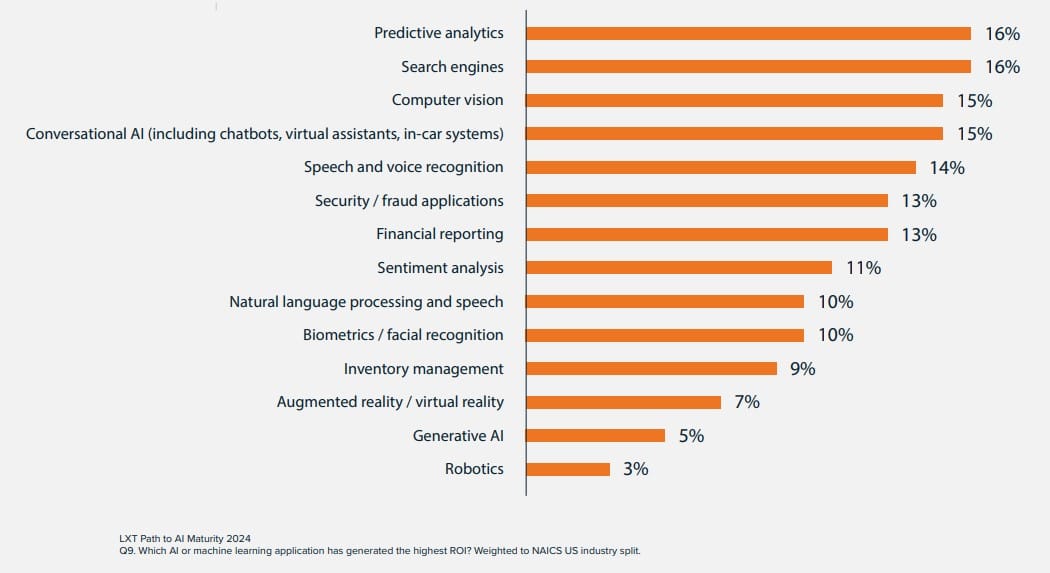
Download the full report here.
LXT commissioned the survey in late 2023 of 322 senior decision-makers (more than half from the C-suite) with verified relevant AI experience at US firms with annual revenue of over $100 million and a company size of more than 500 employees.








